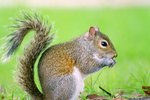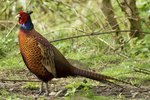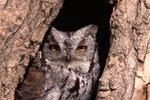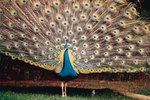
When trying to attract songbirds and other native bird species into your yard, a few items are of the utmost importance. Bird feeders, bird baths and birdhouses are all pivotal when creating a wild bird habitat. The birdhouse, sometimes called a nesting box, must meet certain measurement specifications to attract specific species. No need to worry, however, as a number of species will take up residence in any cavity you provide.
Entrance Hole
Although all measurements of a nesting box are important, the entrance hole size is of particular importance. The entrance hole for some species must be within a small, specific range to prevent other species from taking over. Some of these holes are quite small: chickadees require an entrance hole of only 1 1/8 inch. House wrens, downy woodpeckers, nuthatches and tufted titmice require 1 1/4-inch holes; tree swallows, Carolina wrens and bluebirds require 1 1/2-inch holes. The hole also must be a specific distance from the floor, 4 to 6 inches is often satisfactory, although certain species may require the entrance hole to be up to 1 foot above the floor.
Floor Space
The floor space of the nesting box is an important dimension: It refers to the space of the floor where the nest will lie. House wrens, nuthatches, downy woodpeckers and chickadees all require a 4-by-4-inch floor space. Tree swallows, bluebirds and prothonotary warblers require a floor space of 5 inches by 5 inches. A 6-by-6 inch floor space is required for larger woodpeckers, purple martins and great-crested flycatchers. Owls and kestrels require at least 8-by-8-inch floors spaces, some need a much larger area.
Box Depth
The depth refers to how tall the box is, another important measurement due to the varying sizes of the bird species. For many nest-box species, 8 inches is a preferred depth and will suffice for bluebirds, chickadees, tufted titmouses and downy woodpeckers. Wrens, tree swallows and purple martins will get by with only 6 inches. The depth must be considerably larger for owls, flickers and the larger species of woodpeckers -- barred owls require at least a 23-inch depth.
Box Placement
Once the nesting box is complete, placement is the final step. The location and height of the nesting box will need to be specific to the bird species you're trying to attract. Woodland locations are best for chickadees, nuthatches and woodpeckers; open fields suit tree swallows, barn owls, kestrel and bluebirds. Bluebirds, chickadees and wrens prefer a box height of at least 5 feet above the ground; larger woodpeckers and nuthatches prefer a height of 12 to 20 feet.
References
Photo Credits
-
Thinkstock Images/Stockbyte/Getty Images
Writer Bio
With a professional background in gardening, landscapes, pests and natural ecosystems, Jasey Kelly has been sharing her knowledge through writing since 2009 and has served as an expert writer in these fields. Kelly's background also includes childcare, and animal rescue and care.




